Creole Sauce is a slightly chunky, slightly spicy seasoned thick tomato sauce. In New Orleans, it’s sometimes referred to as “red gravy.”
You could use it over shrimp, fried eggplant, or grilled or baked chicken breasts.
The Ball / Bernardin Complete book, from which this recipe comes, suggests: “This spicy Southern sauce is ideal for baking and barbequing chicken or fish. If it’s too hot for your taste, tame it with a bit of sour cream or yogurt, which will give a slightly charred result to your meat or fish, similar to blackened chicken.”
Here’s a slightly different version, from the Ball Blue Book: Creole Sauce for Pressure Canning.
The recipe
Jar size choices: 125 ml (½ cup / 4 oz) OR quarter-litre (½ US pint / 8 oz)
Processing method: Either water-bath or steam canning
Yield: 8 quarter-litre (half-pint / 250 ml / 8 oz / 1 cup) jars
Headspace: 2 cm (½ inch)
Processing time: Either size jar 20 minutes
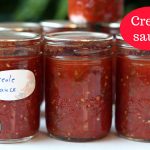
Creole sauce
Ingredients
- 3 kg tomatoes (11 cups / 6.5 lbs. Measured after prep)
- 150 g green pepper (finely chopped. 1 cup / 5 oz. Measured after prep. About 1 large.)
- 175 g onion (finely chopped .1 cup / 6 oz in weight. Measured after prep.)
- 3 cloves garlic (washed, peeled, minced)
- 4 tablespoons red wine vinegar (5% or higher)
- 2 tablespoons Worcestershire sauce
- 1 tablespoon oregano dried
- 2 teaspoons hot pepper sauce
- 1 teaspoon ground black pepper
- ½ teaspoon salt (or non-bitter, non-clouding salt sub)
- ½ teaspoon cayenne pepper
Instructions
- Wash, peel, core and coarsely chop the tomato.
- Add to a large pot (at least 8 litres / quarts in size).
- Wash, seed, and chop the green pepper. Add to pot.
- Wash, peel and chop the onion. Add to pot.
- Wash, peel and mince the garlic. Add to pot.
- Add all remaining ingredients to pot.
- Bring to a boil, stirring often.
- Reduce heat to a gentle boil, and let simmer uncovered for about 40 minutes, or until the consistency of a somewhat thin ketchup.
- Ladle sauce into heated jars, leaving 2 cm (½ inch) headspace.
- Debubble, adjust headspace.
- Wipe jar rims.
- Put lids on.
- Process in a water bath or steam canner.
- Process jars for 20 minutes; increase time as needed for your altitude.
Nutrition
Reference information
How to water bath process.
How to steam can.
When water-bath canning or steam canning, you must adjust the processing time for your altitude.
For salt substitute, non-bitter, non-clouding Herbamare Sodium-Free was used.
Recipe notes
- You could start with 2 ¾ litres (11 cups / 88 oz) of crushed or diced tomato from a tin or home canned.
- To coarsely chop the tomato, you can use the pulse button on the food processor.
- To finely chop the green pepper and the onion, you can use the pulse button on a food processor.
- The recipe actually calls for green onion, presumably with its stalks for the taste, though it doesn’t actually say. Any onion would do but if you do have green onion, you might want to use it.
- Any vinegar is fine as long as it is 5% strength or higher.
- If you prefer a sauce with more ‘heat’, add a bit more cayenne pepper.
- This is an ideal mixture to use a heat diffuser with during the long simmering phase to avoid bottom scorching.
Purists would dispute that this is a true Creole sauce, as it is missing celery. In Creole cooking, green pepper, onion and celery are known as the “Holy Trinity.”
You can’t just add celery, as you aren’t supposed to increase the amount of low-acid ingredients in a recipe like this that clearly depends on a pH lower than 4.6 for safety. You could safely add a teaspoon of celery salt to try to compensate for the lost flavour.
For a version with celery, see the Creole Sauce recipe in the Ball Blue Book (2014) on page 117. It requires pressure canning, though.
Recipe source
- Kingry, Judi and Lauren Devine. Ball / Bernardin Complete Book of Home Preserving. Toronto: Robert Rose. 2015. Page 367.
Modifications made:
- Salt-free alternative;
- Worked out equivalencies for starting from canned tomato.
History
The lack of celery is so glaring, one wonders why the recipe developers didn’t split the onion amount in half and test it for swapping in some celery instead.
However, the answer may be in the recipe’s age.
Celery’s place in the sauce, though taken for granted now, is actually quite recent, because celery didn’t make its way into Creole cooking until around the middle of the 1900s:
Before the latter half of the 20th century, celery was rarely used in Creole gumbo.” [1]Nobles, Cynthia Lejeune (2009). “Gumbo”. In Tucker, Susan; Starr, S. Frederick. New Orleans Cuisine: Fourteen Signature Dishes and Their Histories. University Press of Mississippi. ISBN 978-1-60473-127-9. Page 113.
In 1934, the Ball Blue Book listed its Creole Sauce with no celery in it:
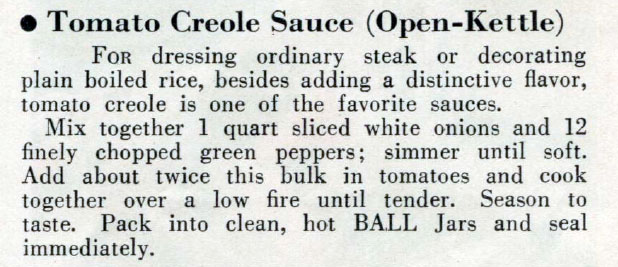
Ball Creole 1934, Blue Book Edition R, page 23.
1953, celery finally appeared in Ball’s Creole Sauce, but only then as an option, and, the recipe required pressure canning.
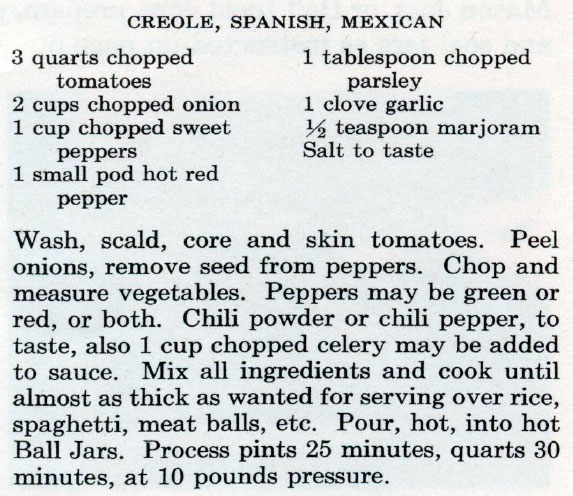
Ball Creole Sauce 1953, Blue Book Edition 26, page 48.
To be clear, the recipes cited above are for understanding of food and recipe development history only and are NOT for canning. Use only current versions of home canning recipes.
Nutrition information
Regular version
Per two tablespoons:
- 11 calories, 27 mg sodium
Sugar-free version
Per two tablespoons:
- 11 calories, 8 mg sodium
* Nutrition info provided by https://caloriecount.about.com
* PointsPlus™ calculated by healthycanning.com. Not endorsed by Weight Watchers® International, Inc, which is the owner of the PointsPlus® registered trademark.
References

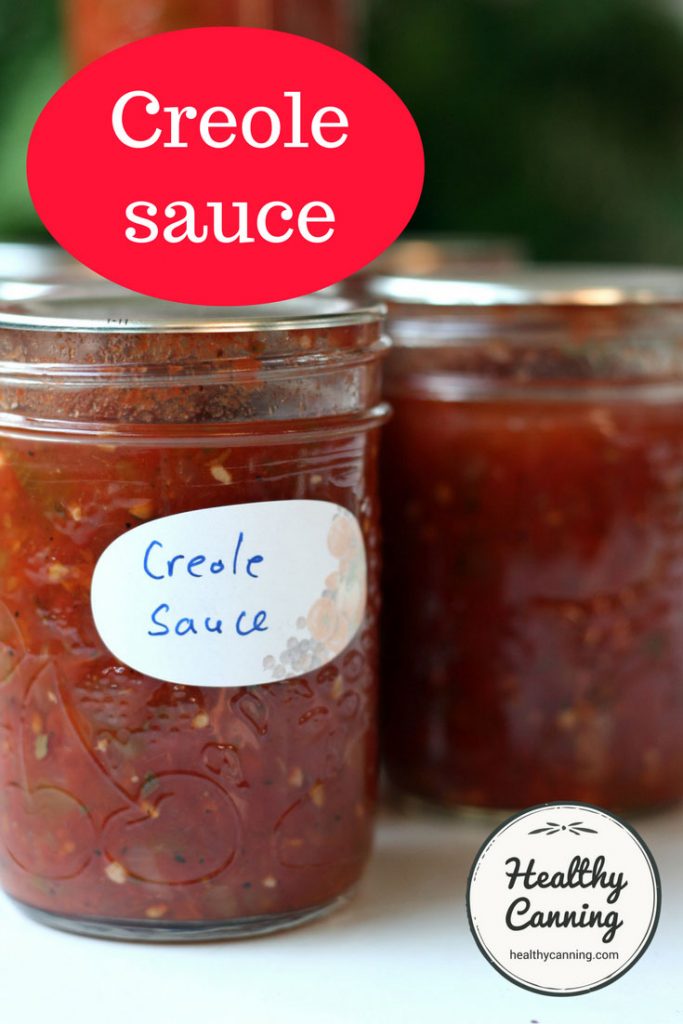
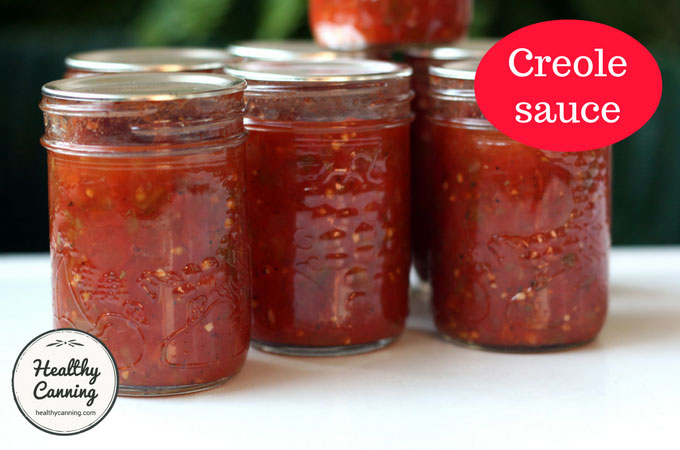
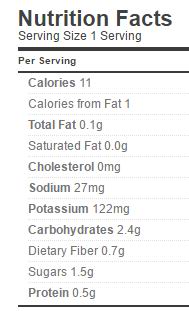
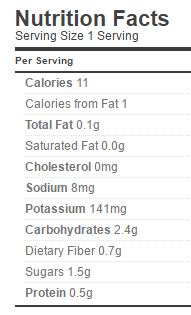
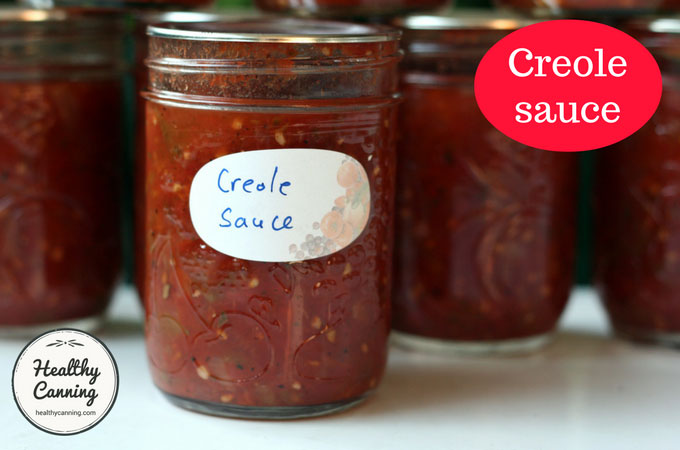
Liz
Please define “hot pepper sauce.” Does this mean Tabasco or something milder?
Linda
If you use the celery salt option does it replace the 1/2 tsp of salt in the recipe?